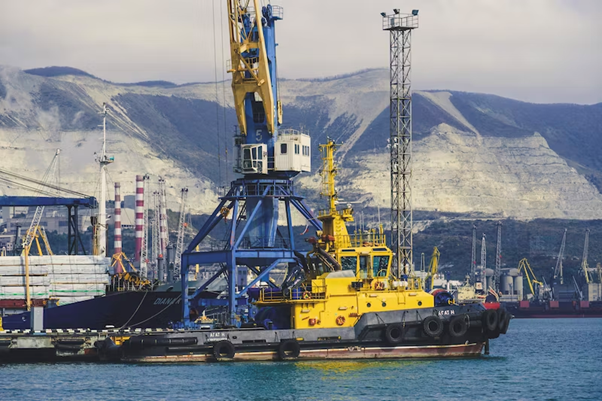Indeed, there are a multitude of transportation types. In logistics, we primarily recognize four: road, maritime, rail, and air. Depending on the business sector, it may be more strategic to adopt one transportation method over another. However, each mode of transportation has its own advantages and disadvantages. Let's discuss them.
Road Transport: Road transport involves the transportation of goods by cars, trucks, vans (industrial vehicles weighing less than 3.5 tonnes according to French legislation), or trailers. It is the most common land transportation mode in France and widely used worldwide. The simplicity of loading and unloading goods compared to other transportation modes makes road transport popular.
Furthermore, road transport is fast and economical for short distances, making it accessible to companies of all sizes. It is practical not only for short and direct trips but also for long-distance transports as it facilitates door-to-door delivery.
Transporting goods by truck is also very secure. Real-time tracking of goods to their destination is possible through onboard navigation systems. Additionally, trailers can be adapted to suit the nature of the goods, ensuring their integrity. There are refrigerated trailers, box trailers, curtain-sided trailers, flatbed trailers, tank trailers, etc.
However, road transport has its drawbacks. One major disadvantage is the emission of combustion gases responsible for the greenhouse effect, which can pose public health problems. In an era where environmental issues are central to government agendas, this is a significant concern. Additionally, traffic congestion at certain times of the day can lead to delivery delays.
Other considerations include:
- Risk of accidents
- Risk of theft
- Relatively limited storage capacity
Rail Transport: Rail transport of goods, popular in Russia and the United States, is less common in France, accounting for less than 10% of national freight transportation. However, it offers significant advantages. It is suitable for particularly heavy goods and long-distance journeys, with minimal impact on pricing. Trains, besides helping to decongest roads, offer substantial storage capacity, which can increase with more wagons.
Rail transport is also reliable and environmentally friendly due to low CO2 emissions. A single train can transport the equivalent load of several trucks, significantly reducing carbon footprint. Rail transport also reduces the emission of fine particles into the atmosphere, contributing to environmental preservation.
However, there are drawbacks to rail transport, including:
- High risk of accidents (derailment, collisions)
- Longer transit times compared to road transport
- Lack of railway infrastructure
- Heavy handling requirements for loading and unloading, leading to losses
- High incidence of damages and frequent delays
Maritime Transport: Maritime freight is the most widespread mode of transportation. It offers significant storage capacity and reduces the risks of loss, theft, or damage through the use of containers and cargo ships. It is reliable for transporting large volumes of goods worldwide, making it attractive to businesses of all sizes.
Maritime transport is advantageous because ships can carry various types of goods, solid or liquid, packaged or unpackaged. It is considered the most environmentally friendly mode of transportation due to its efficiency in transporting large volumes in a single shipment, consuming less energy than trains, planes, or trucks.
Additionally, maritime transport is competitive with declining tariffs, especially over distances exceeding 500 km. It is safer than road and rail transportation, with fewer accidents and allowance for the transport of hazardous goods.
However, maritime transport has its drawbacks, including:
- Lengthy and cumbersome customs procedures
- Long delivery times
- Unsuitability for transporting perishable goods or those requiring rapid delivery
- Vulnerability to weather conditions and piracy risks
Air Transport: Air transport is the fastest mode of transportation for long distances, particularly suitable for perishable or fragile goods. Its speed reduces transit times, avoiding disruptions in logistic chains. It is reliable, with a low incidence of accidents and offering guarantees for shipping high-value items.
Air transport is regulated by the International Air Transport Association (IATA) and airline conventions, monitored by customs expertise and law enforcement, significantly reducing the risks of loss or theft.
However, air transport is costly and the most polluting mode of transportation. Thus, companies with environmental commitments tend to avoid it. It is also unsuitable for transporting heavy or hazardous goods, unlike maritime transport.
In conclusion, companies are advised to choose the most suitable transportation mode for their products. Some companies opt for a combination of transportation modes for a single shipment, known as intermodal or multimodal transport, for optimal results.







